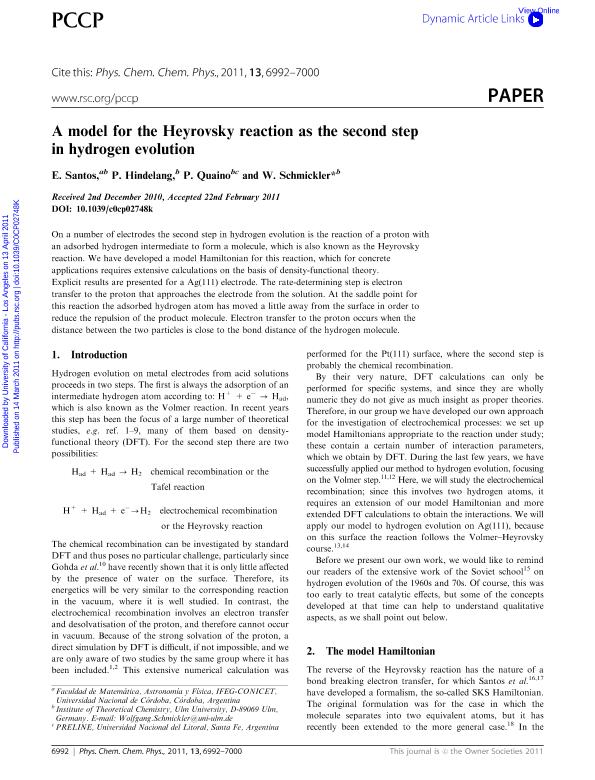Artículo
A model for the Heyrovsky reaction as the second step in hydrogen evolution
Fecha de publicación:
04/2011
Editorial:
Royal Society of Chemistry
Revista:
Physical Chemistry Chemical Physics
ISSN:
1463-9076
Idioma:
Inglés
Tipo de recurso:
Artículo publicado
Clasificación temática:
Resumen
On a number of electrodes the second step in hydrogen evolution is the reaction of a proton with an adsorbed hydrogen intermediate to form a molecule, which is also known as the Heyrovsky reaction. We have developed a model Hamiltonian for this reaction, which for concrete applications requires extensive calculations on the basis of density-functional theory. Explicit results are presented for a Ag(111) electrode. The rate-determining step is electron transfer to the proton that approaches the electrode from the solution. At the saddle point for this reaction the adsorbed hydrogen atom has moved a little away from the surface in order to reduce the repulsion of the product molecule. Electron transfer to the proton occurs when the distance between the two particles is close to the bond distance of the hydrogen molecule.
Palabras clave:
Heyrovsky Reaction
,
Hydrogen Evolution
,
Ag(111)
Archivos asociados
Licencia
Identificadores
Colecciones
Articulos(CCT - SANTA FE)
Articulos de CTRO.CIENTIFICO TECNOL.CONICET - SANTA FE
Articulos de CTRO.CIENTIFICO TECNOL.CONICET - SANTA FE
Citación
Santos, Elizabeth del Carmen; Hindelang, Peter; Quaino, Paola Monica; Schmickler, Wolfgang; A model for the Heyrovsky reaction as the second step in hydrogen evolution; Royal Society of Chemistry; Physical Chemistry Chemical Physics; 13; 15; 4-2011; 6992-7000
Compartir
Altmétricas




